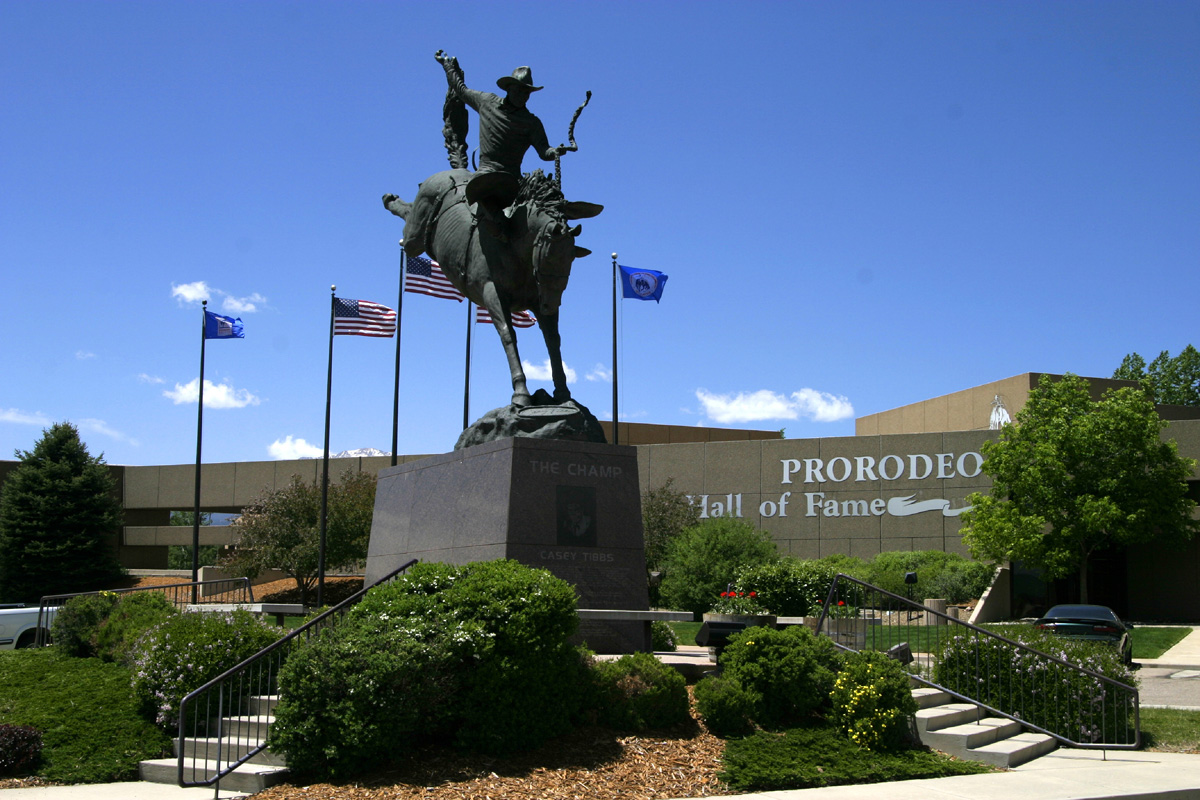The Local newsletter is your free, daily guide to life in Colorado. For locals, by locals.
Forget the Wild West—rodeos are very much alive and kickin’ across the western U.S., including in Colorado. Our state hosts more than 25 rodeos each year, including one held in conjunction with the National Western Stock Show, which will take place at Denver’s National Western Complex from January 9 to 24.
In fact, the history of rodeo is firmly rooted in our state. While there has been debate on the matter, some claim that the world’s first rodeo was held in Deer Trail, an I-70 hamlet just 55 miles east of Denver, on July 4, 1869. Colorado is also home to the ProRodeo Hall of Fame and Museum of the American Cowboy, which opened in Colorado Springs in 1979. This 13-acre museum commemorates the champions of the traditional American sport and preserves the legacy and cultural heritage of these cowboy (and cowgirl) competitions.

The roots of the rodeo—a word that means “roundup” in Spanish—can be traced back to vaqueros, early Spanish cattle drivers who settled in what is now California. Following the Civil War, as the frontier moved relentlessly westward, American cowboys gradually learned their crucial animal-handling skills.
As cattle ranching spread across the West, cowboys began to hold regular gatherings to separate and regroup their animals. These meet-ups gradually turned into contests of courage and skill, and later into entertainment. By the late 1880s, Wild West shows featuring legendary cowboys-turned-performers like Buffalo Bill Cody toured across the country and even overseas, spreading the legends and romance of the American West to a captivated worldwide audience.
Following World War I, rodeo—like a champion bull rider—was barely hanging on. But several events, including the Madison Square Garden and London rodeos, slowly revived interest in the sport. In the mid-1950s, two dueling governing associations—the Rodeo Cowboys Association and the International Rodeo Association—merged to form the world’s largest sanctioning body, the Professional Rodeo Cowboys Association (PRCA). The PRCA operates the museum and the ProRodeo Hall of Fame, which are dedicated to commemorating past champions as well as preserving rodeo history and artifacts.
The prime attraction is the Hall of Champions, which showcases more than 275 inductees, including competitors in every professional rodeo event such as bareback riding, calf roping, and steer wrestling, as well as famous rodeo clowns, stock contractors, and 28 legendary animals. One of the most infamous was Necktie, the notorious bucking horse immortalized at the museum’s entrance in a bronze statue on whose back Casey Tibbs—the “Babe Ruth of Rodeo”—is trying to stay seated.
Other displays illustrate the detailed changes in cowboy apparel and equipment—think saddles, chaps, and hats—throughout the sport’s long history, and a rotating art exhibit about western wildlife that features original paintings and sculptures by Monument artists Mary Pape and Aaron Barkley. The center also has an outdoor garden that hosts live roping events from May through October.
Visit: The Pro Rodeo Hall of Fame is open from 9 a.m. to 5 p.m., Wednesday to Sunday from September 1 through April 30, and seven days a week the rest of the year. 101 Pro Rodeo Dr., Colorado Springs; 719-528-4764








